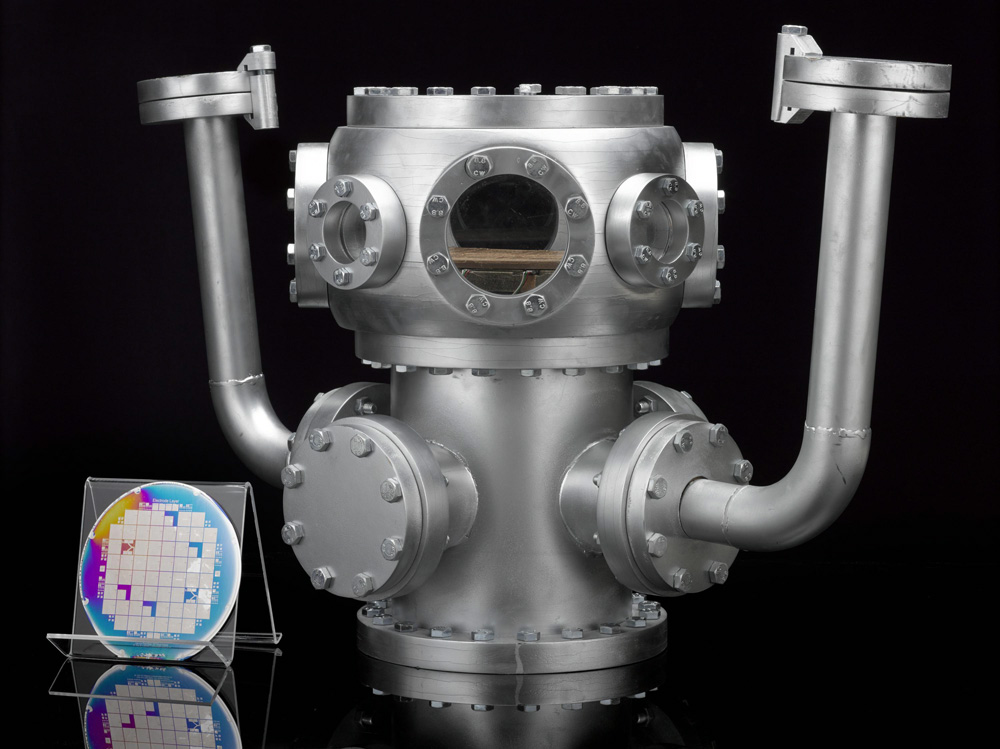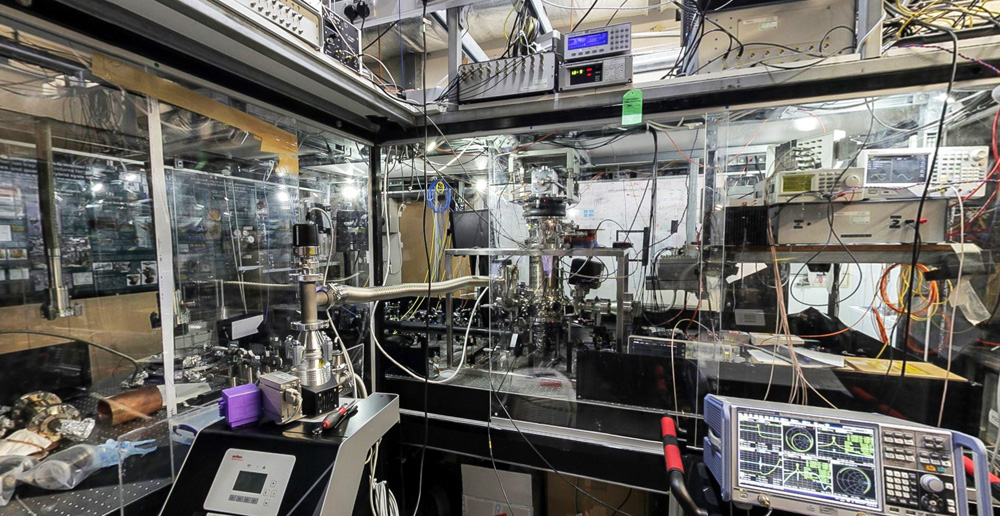Wrapping my brain around quantum
I learn a lot about science and engineering at the Science Museum, but until I attended the Quantum Technology Showcase in 2015 I hadn’t had to think about theoretical physics since my GCSEs. I was on a scouting mission for the Contemporary Science Team and didn’t know what to expect; certainly not that I’d become fascinated by quantum physics. In fact, I discovered a whole new world of extremely complicated but incredibly exciting technologies: early examples of quantum sensors, imaging, encryption, and computers. The quantum effects they harness could make these technologies much more precise, and powerful, than their current non-quantum counterparts.

L2018-1. Model of the vacuum chamber – part of a prototype quantum computer and L2018-2 Quantum computing microchip wafer. © Ion Quantum Technology group at the university of Sussex
Untangling quantum
To see if we could feature these projects in the museum, I had to delve into the theories behind quantum mechanics. Getting my head around concepts like ‘an atom can be in more than one place at once’ or ‘entangled with other atoms’ was tough. Translating them into simple terms was even tougher. These ideas are mind-blowing because they disrupt what we know about the everyday world we live in. Scientists have tested these weird phenomena in lab experiments but they’re still pretty mysterious.
Evolution / revolution
Of all the technology that uses quantum phenomena I found computers especially interesting. Quantum computing is an emerging field. Fully developed quantum computers don’t exist yet, but the technology is progressing at an incredible rate. Concepts have been worked up into prototypes that are now being turned into real-world applications. Experts predict that this new computing revolution could happen in the next 25 years. Future quantum computers could do calculations in seconds that would take current supercomputers millions of years to complete. They could predict the weather more accurately and transform the way we develop new medicines, but they also pose a risk to cybersecurity.
Making the invisible visible
Finding objects to represent cutting edge science is one of our main challenges. I have been looking for the right project to feature in a display about quantum computers since the showcase in 2015. Through my research I met the Ion Quantum Technology Group at the University of Sussex and visited their lab to see their prototype quantum computer. Brimming with machines, wires and lasers, the lab was amazing. The Group are building a prototype that will show how a quantum computer could be scaled up to tackle some of the world’s biggest problems. They had some great pieces of equipment we could potentially display—which is a key concern for us when we’re explaining science that’s so small it’s invisible.

It’s kind-of hard to explain…
The labels that accompany the Quantum Computers exhibit are subject to tight word counts. It’s nearly impossible to explain in any detail how a quantum computer works within those limits, so we’ve taken a different approach. You don’t need to understand how your smartphone works to appreciate their global impact. So we’ve addressed the basics of quantum physics in the exhibit but made the potential impact of quantum computers on our lives its central focus.
The Quantum Computers exhibit is on display in our Tomorrow’s World gallery until early summer.